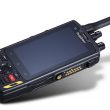Public safety radio
Money. Public safety radio communications. How and when the two come together have much to do with implementing new systems.
Some cities and counties go it alone. Others form alliances with one another for combined systems. Forming alliances take time. Not all of the participants may need upgrades and have funding at the same time. When such a plan comes together for a combined system, economies are gained.
How often do large cities substantially upgrade their radio communications systems? Every 10 or 15 years, at best. For some, it may be as long as 30 years. Mention the 700MHz band in connection with upgrading public safety radio systems and you’ll find some agencies are counting on it, some are merely hopeful and some find the idea laughable-meaning unaffordable. Money-how to get it, how much is available, and when-has a lot to do with various agencies’ perspectives on the new band.
Some agencies missed out on 800MHz National Public Safety Planning Advisory Committee (NPSPAC) frequencies because by the time their funding was available and their governments gave approval to apply, frequencies in their area were taken. One example is San Mateo County, CA. You can read on our Web site some details about how the county found other frequencies. (See “FCC Diverts Paging Control Channels for San Mateo Public Safety System” at www.mrtmag.com/editorial/news.htm.)
San Mateo’s timing was too late for NPSPAC and too early for the 700MHz frequencies being planned by the FCC’s National Coordinating Committee (NCC).
Despite progress with standards and interoperability features that are expected to bring greater competition, and with it, lower prices, some agencies still complain that public safety handsets and base stations are unreasonably priced. High prices can limit upgrades to long cycles, too.
For fire departments, where as many as 80% of firefighters are volunteers who buy their own equipment, price is a big consideration. It means simple and conventional radio equipment. If and when it comes to system upgrades, many fire departments will look at VHF highband and frequencies transferred from federal government use to commercial, state and local use under the FCC’s administration. NPSPAC and NCC frequencies won’t get a glance. Right?
That being said, keep an eye on the Pennsylvania Public Safety Radio Project. (See “Up and Out in Pennsylvania” in the February issue of Mobile Radio Technology, and the project’s Web site at www.radio.state.pa.us).
The project represents a big step toward the “de-radioing” of wireless communications networks, as the computer component of any radio communications device and network grows larger and larger. The project uses off-the-shelf components for almost everything but the digital-to-analog conversion. With the use of a wide-area computer network to support statewide radio coverage, it becomes possible to buy routers, servers and hubs from highly competitive computer suppliers. Suddenly, the radio network takes on the same guise as a radio itself-a microcomputer with RF laid on top. RF manufacturing is no longer such a big deal.
Besides that, there’s the notion that more and more jurisdictions will rely on outsourcing the entire radio communications function. That’s part of what Com-Net bets as it absorbs Ericsson Private Radio Systems and advances its business model to finance, construct, administer and maintain entire radio systems to serve agencies that will contract for airtime. Com-Net’s going to need a lot of money to carry out its plan. In effect, it will be a surrogate for the city, county and state governments, shouldering a massive financial burden during the radio system’s life cycle. What may make the idea attractive to governments-and successful for Com-Net-is the shift by the governments from a capital expenditure to an operating expense. That would seem easier for council members, commissioners and legislators to approve. It may give Com-Net an advantage, and it may deliver upgrades to public safety agencies on shorter cycles.
Nextel-NextWave saga Because last month we updated Nextel’s pursuit of frequencies licensed to NextWave, it’s worth mentioning that a federal court has rejected the FCC’s move to cancel NextWave’s licenses, a move that would have made them available for reauction. How’s this? The judge called the FCC’s action “self-help repossession by ambush.”
Part of the problem is that attorneys speaking for the FCC in various times and places have made inconsistent statements. Maybe they haven’t had time to check with one another, or maybe they’ve changed their minds. Whatever the case, sometimes they’ve said NextWave owned the licenses, so they could be sold to another company. (Guess who?) In backing up the action to cancel the licenses, they’ve said that NextWave never owned them because it defaulted on payment, an omission that “automatically” cancels a license.
Radioburgers Already one of the large users of business radio in the United States (those wireless mics used at the drive-up window are on VHF highband channels), McDonalds restaurants are taking a step toward using radio for automatic billing, too.
Using the same technology that bills motorists automatically for tolls on highways, five restaurants in Santa Ana, CA, will bill drive-through customers for food purchases. It’s expected to cut 15 seconds off of an average 131-second wait. I guess that adds up.












